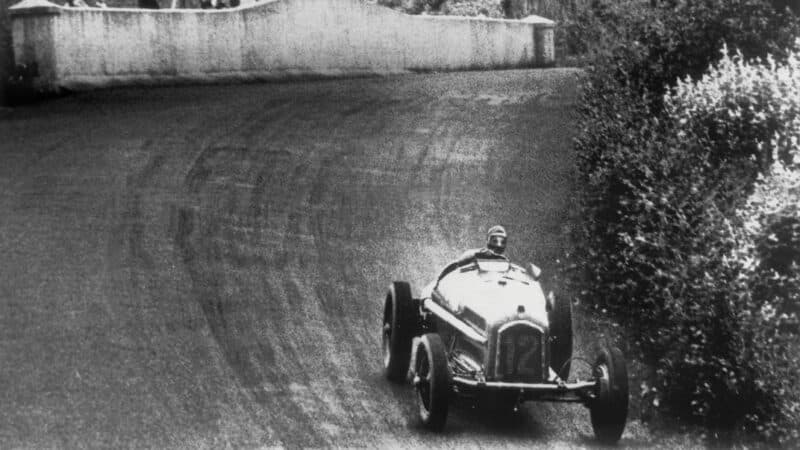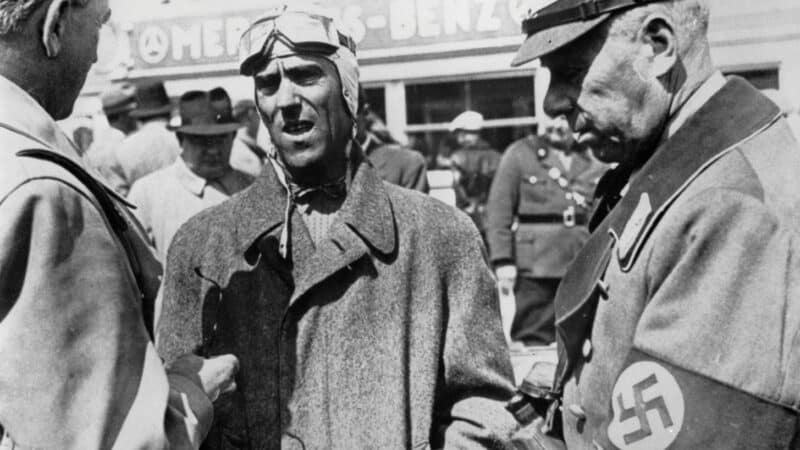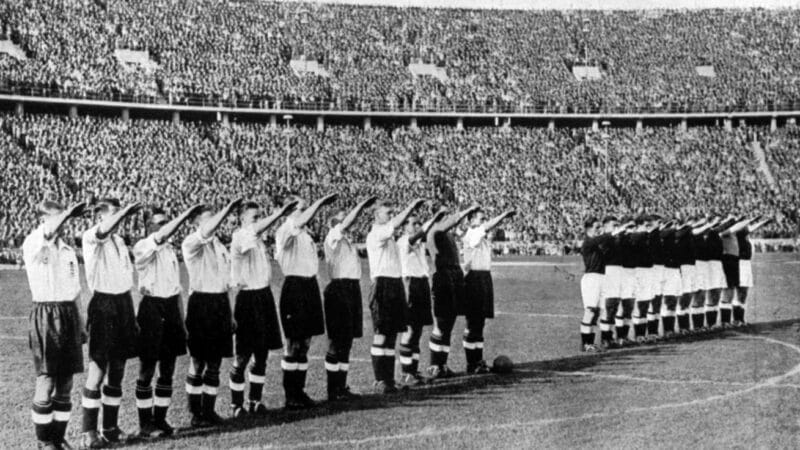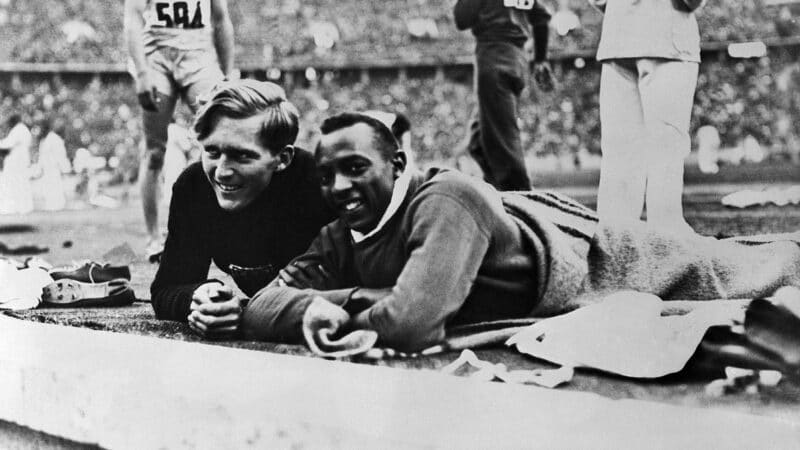The grand prix car that beat Hitler
Tazio Nuvolari’s victory in the 1935 German GP remains among the most significant in motor racing history. It was partly the way he drove his Alfa, but mostly the political context

No longer fastest, but still first. Tazio Nuvolari won the 1935 German GP for Ferrari’s nascent Alfa Romeo programme. The car was the only non-German runner inside the top nine at the flag.
Getty Images
Taken from Motor Sport, March 2017
Adolf Hitler was first to take advantage of the opportunity offered by modern international sport to ambitious leaders looking for ways of demonstrating the irresistible power of the forces at their command. Very soon after he and his National Socialists came to power in 1933, all sports organisations connected to religions and other political parties were banned outright. The head of the existing national sports office, Theodor Lewald, was removed when he was found to have a Jewish grandmother. Into Lewald’s place, charged with developing a new generation of champions, came Hans von Tschammer und Osten, a member of the SA, the paramilitary wing of the Nazi party. The new Reichssportführer sat at the head of the Deutscher Reichsbund für Leibesübungen (DRL), the Third Reich’s national league of physical education, an umbrella body to which all individual sports bodies now reported.
If Hitler’s athletes were to be promoted as higher beings, thus fulfilling the Führer’s belief in the inherent superiority of the Aryan race, then so were German engineers. Before 1914, teams from Mercedes-Benz and Opel had competed successfully in Grand Prix racing. Between 1918 and 1933, however, the French and the Italians fought for supremacy: Bugatti and Delage versus Alfa Romeo and Maserati. By giving his blessing to a revived Mercedes team and the new Auto Union outfit, Hitler brought Germany back into the equation.

Nuvolari speaks with Nazi generals, no doubt they were less than delighted with the result
Getty Images
On his order, the two teams divided an annual grant of 450,000 Reichsmarks (the equivalent of about £2.5 million in today’s values) between them, leaving each to find at least four times that sum from their own resources in order to meet their racing budgets. The high standards applied to German engineering were seen in the supercharged straight-eight Mercedes W25 and Dr Ferdinand Porsche’s mid-engined V16 Auto Union Type A. Making their debuts in 1934, they seemed to represent a leap into a new era of technology.
So when Tazio Nuvolari won the 1935 German GP at the Nürburgring in Scuderia Ferrari’s beautiful but obsolete Alfa Romeo Tipo B, it represented a serious blow to National Socialist pride. Luck played a part when the leading Mercedes of Manfred von Brauchitsch blew a tyre on the last lap and handed the race to Nuvolari, who had been entertaining the crowd of 330,000 by “driving like a demon”, in the words of The Autocar’s racing correspondent.
Legend has it that in the expectation of a home victory, the public address system was equipped only with a recording of Deutschland Über Alles, and that Nuvolari had to produce his personal copy of the Marcia Reale to be played in honour of his victory. The Italian anthem rang particularly hollow in the ears of Korpsführer Adolf Hühnlein, the sour-faced head of German motor sport, a veteran of the First World War and of the unsuccessful 1923 ‘beer-hall putsch’ in Munich.

The England football team (in white) argued against having to give the Nazi salute ahead of their game in Berlin in 1938. They did thrash the Germans 6-3 though.
Getty Images
Five months later, a second reverse for the Third Reich’s sporting heroes came in very different surroundings when Germany’s footballers travelled to play England at White Hart Lane – a poignant choice, given the traditionally strong Jewish following of the ground’s home club, Tottenham Hotspur – in a match that had been the subject of controversy since its announcement. A headline in a London evening newspaper read “JEWS UP IN ARMS” and the Trades Union Congress unsuccessfully petitioned the government to call the whole thing off. England played poorly against opponents concentrating almost wholly on defence, but managed a 3-0 victory.
When the teams met again in Berlin in May 1938, two months after the Anschluss, the British ambassador had to plead with the England players to give the Nazi salute during the German national anthem. Despite misgivings, they complied before thrashing the home side 6-3 in front of a crowd of 110,000.
“Owens’ success was an affront to the Nazi doctrine of the racial inferiority of black people”
In the Olympic summer of 1936 the Führer’s countenance was darkened by the feats of the USA’s James ‘Jesse’ Owens, who took the gold medals in the men’s 100m, 200m, 4x100m relay and the long jump. This affront to the Nazi doctrine of the racial inferiority of black people was impossible to ignore. But not all Germans shared Hitler’s prejudice. Luz Long, the silver medallist in the long jump, might have been the very image of the Ayran superman, but he and Owens left the arena with arms linked and their friendship survived even Long’s battlefield death in 1943, in the form of continued correspondence between Owens and his erstwhile opponent’s family.
A further German-American friendship sprang up during the two heavyweight boxing matches held at Yankee Stadium in New York between Max Schmeling and Joe Louis, respectively the former and future world champions. Schmeling was 30 when they first met in 1936, and Louis 22. The German stopped the American in the 13th round, but it was Louis’s manager who managed to secure a title fight against Jim Braddock for his man, at which the Brown Bomber acquired his world championship.

Jesse Owens and Luz Long remained friends, despite the war
Getty Images
Schmeling’s chance to dethrone Louis came two years later, but the referee stopped the contest two minutes into the first round, when he was knocked down by Louis for the third time.
Later, as the owner of a Coca-Cola bottling plant in Germany, Schmeling was able to give financial assistance to a struggling Louis and even helped to pay for his funeral in 1981. Schmeling himself died in 2005, aged 99.
Finally there was the 1938 German Grand Prix, won by Dick Seaman in his Mercedes. Now Korpsführer Hühnlein had the unwelcome duty of sending a telegram to inform Hitler that his showpiece event had been snatched from his German champions by a 24-year-old Englishman. According to the winner’s friend and biographer Prince Chula, this was “As if a German had batted better than Bradman in Australia [or] a Frenchman had outplayed Babe Ruth at baseball in America.”
On the best day of his young life, Seaman could not ignore the protocol, but his Hitler salute on the victory rostrum must have been the limpest and least enthusiastic ever witnessed.
